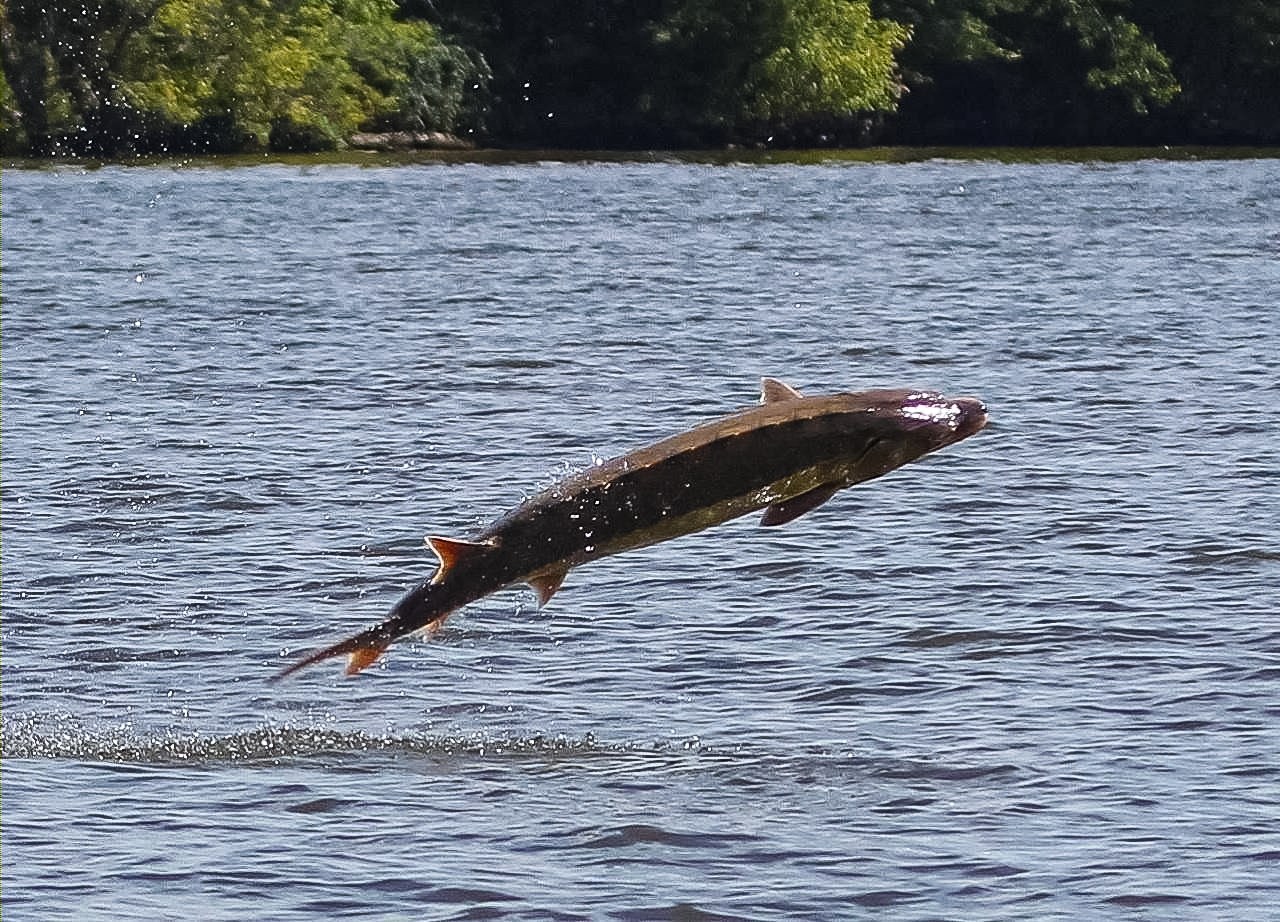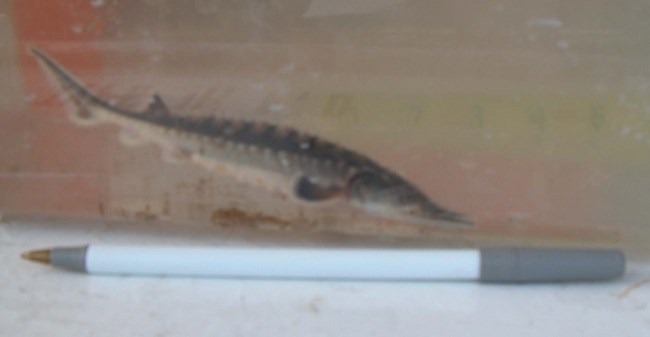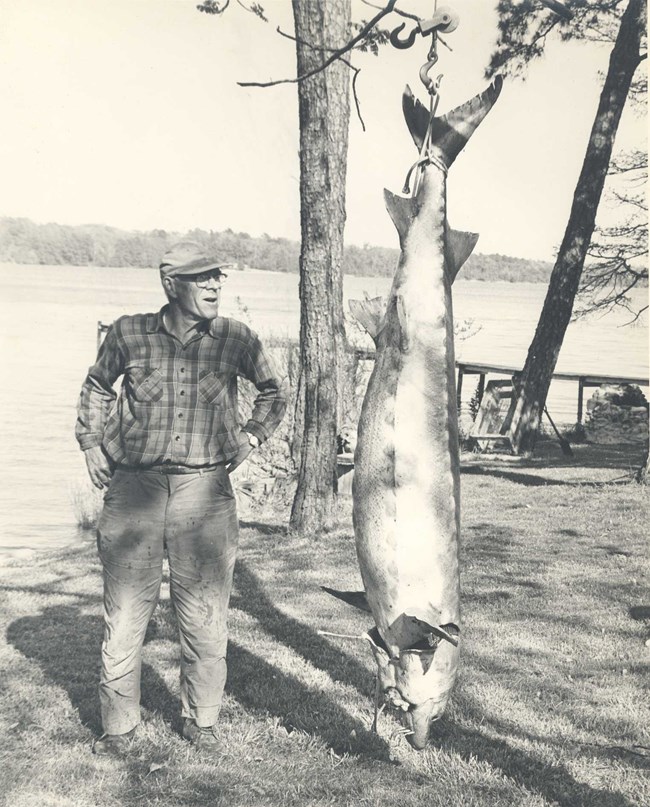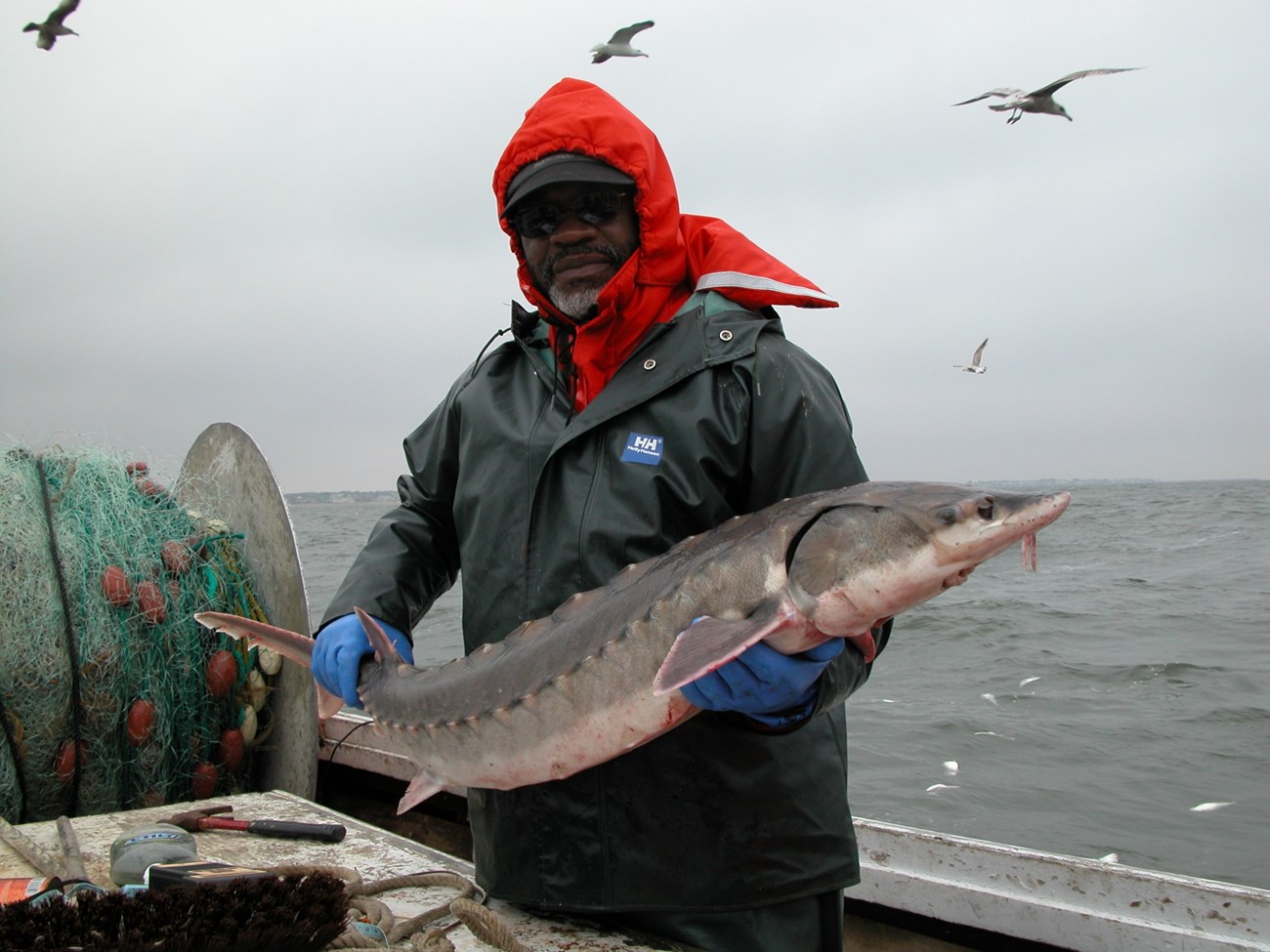Last updated: January 13, 2022
Article
Northeast Coastal and Barrier Network Species Spotlight: Atlantic Sturgeon

Don West
A Living, Swimming Fossil
Unlike most other species of fish, the sturgeon does not have scales. Instead, the species is covered in a thick layer of skin shielded by 5 layers of bony plates called scutes that run down the body. This armor-like appearance makes the species look like a “living fossil.” Not only does their appearance warrant this name, but the fossil record confirms it. Sturgeon were found in water bodies as far back as 85 million years ago and have barely changed since. They exist today in a form that closely resembles their ancient ancestors, making them not only a true “living fossil,” but an intriguing addition to the fauna of the Chesapeake Bay and its tributaries.
Background
The Atlantic sturgeon can grow up to 14 feet in length and weigh up to 800 pounds. It has a short snout with four whisker-like barbels in front of the mouth. Just like a shark, the sturgeon has a heterocercal tail with the upper fin much larger than the lower fin. Their coloration varies from blueish-black to an olive brown with pale sides and underbelly. Atlantic sturgeon are bottom-feeders and feed on benthic organisms such as crustaceans, mollusks, and worms.

Albert Spells, USFWS
They are an anadromous fish- meaning that they live in both fresh and saltwater environments during their lifetime, spawning and giving birth upstream in river systems across the east coast. Slow to grow and mature, juvenile sturgeon tend to stay in the freshwater rivers in early stages of their lives before transitioning to the coastal waters as adults. Known to have a lifespan of up to 60 years, sturgeon will not return to their spawning place until they breed starting at the age of 12. Atlantic sturgeon are an elusive species in the waters of the James and York Rivers surrounding Colonial National Historical Park, but this was not always the case.
“The Fish That Saved Jamestown”
In 1607 when the first English colonists arrived at the Jamestown colony, the James River was teeming with sturgeon. Amid a famine in 1609, colonists looked to Atlantic sturgeon as their only reliable and prevalent food source. If it weren’t for this food supply, Jamestown very well could have collapsed. The sturgeon were not only useful to the English, as the Powhattan Confederacy of eastern Virginia were experienced fishermen and employed many methods to catch and eat the giants well before English colonists arrived.
From Abundance to Near Extinction
The James River was not the only place in 17th-century America where Atlantic sturgeon were found in large numbers. While today the species is split up into smaller populations categorized by the river systems they inhabit, historically Atlantic sturgeon stretched far and wide across river systems and estuaries of the east coast from Newfoundland to Florida.

Charles City, VA Library
As more and more settlers from Europe arrived in Virginia and the population ballooned, fishermen had their sights on the Atlantic sturgeon of tidewater Virginia. Virginians quickly learned to value the sturgeon for delicacies such as smoked fish and especially caviar. Commercial fishing was at an all-time high during the late 19th-century, but unsustainable practices caused sturgeon populations to plummet. A similar story can be told across all the eastern seaboard. According to The National Oceanic and Atmospheric Administration (NOAA), a total catch of 7 million pounds was reported for 1887 in the United States. This amount dropped to a mere 20,000 pounds by 1905. As caviar connoisseurs flocked to the East, excessive fishing continued in order to fill their plates. While overfishing dealt a huge blow to sturgeon population numbers, the decline did not stop there.
Work Towards Recovery
Federal protection did not come until 2012 when the NOAA protected the population of Atlantic sturgeon in the James River under the Endangered Species Act. Atlantic sturgeon are known to be still spawning in 22 of the 38 rivers where populations once thrived. The James River is one of the 22 where you can spot the fish during the spring and fall migrations. It has been illegal in the state of Virginia to catch the fish since 1974.

Kelly Place
In 2010, sparked by multiple studies done by the Virginia Institute of Marine Science (VIMS), James River Association, NOAA, United States Fish and Wildlife Service (USFWS), Virginia Commonwealth University (VCU), and U.S. Army Corps of Engineers partnered to create multiple artificial reefs along the James River to provide suitable spawning locations for the sturgeon population in the river. Since 2010, three reefs have been established downriver from Richmond, VA. The artificial reefs are being monitored by researchers at the Virginia Sturgeon Restoration Project to assess their success in restoring Atlantic sturgeon numbers in the James.
While restorative work must continue, efforts at both the state and federal level continue to help bring the historically important Atlantic sturgeon back from the brink of extinction.
Written by Edward Cascella, Geoscientists-in-the-Parks (GIP) Intern
